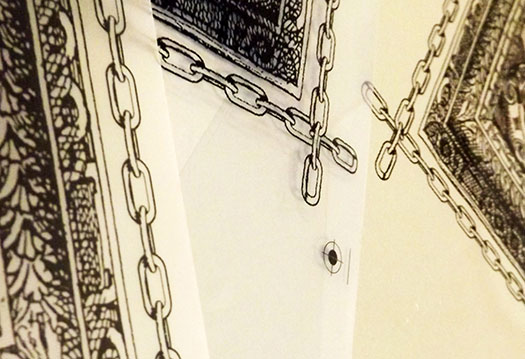June 26, 2014
The quality of your print is determined by the quality of your film. The better the film clarity, the clearer and crisper the resulting image on the screen.
If the “clear” portion of the film isn’t crystal clear, then a filtering effect can occur during the exposure, as it would with a milky or more opaque type of film. With clearer film, there also is a smaller chance of under-exposure.
Additionally, the black positive area should be completely dark and opaque so that all the light exposing the emulsion is filtered or blocked by the film positive portion, decreasing the chances of over-exposure and loss of detail.
Film media options include:
– Vellum, one of the lowest-quality types of film positives. The translucent white is not clear and acts as a filter, and the black print is not very opaque. Vellum is not ideal for transferring detailed art to screen, but it works well under certain conditions, such as one- or two-color jobs that are not as particularized. Vellum also can shrink when heated, such as when run through a laser printer, so it is not recommended for prints requiring exact registrations. When using vellum, you can achieve a darker black print by using a spray fixative, which “fuses” the toner particles to make the printed areas appear darker.
– The inkjet type of films often work much better than vellum because the black positive portion can become very black and opaque under the right printer settings and the film portion of the screen positive can be purchased in a very clear version. In addition, these films are readily available.
– Real Ortho Litho film and printers are the highest-quality option. For four-color jobs and prints where perfect registration is important, consider switching to Ortho film.
In summary, the clearer the film, and the better and more opaque the positive, the better.
Kieth Stevens is the Western regional sales manager for International Coatings. He has been teaching screen printing for more than 10 years and is a regular contributor to International Coatings’ blogs. For more information, visit iccink.com and read the company’s blog at internationalcoatingsblog.com.
April 18, 2024 | Digital Decorating, Screen Printing
Stratasys Ltd. has launched what it describes as a new direct-to-garment (DTG) solution for its J850 TechStyle printer, the newest offering in the Stratasys 3DFashion direct-to-textile printing technology product line.
FULL STORY
April 17, 2024 | Industry, Screen Printing
The Women’s California Wave Wash Sunday Hoodie, offered by the Independent Trading Co., is the latest style in this collection, which also features crew necks, pullovers and full-zip styles.
FULL STORY
April 9, 2024 | Industry, Screen Printing
Per the research firm Future Market Insights (FMI) starting from a 2023 baseline of $3.4 billion, the custom T-shirt printing market in the United States is projected to reach $9.9 billion by 2033.
FULL STORY




